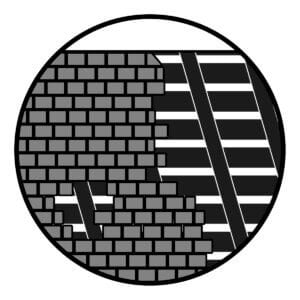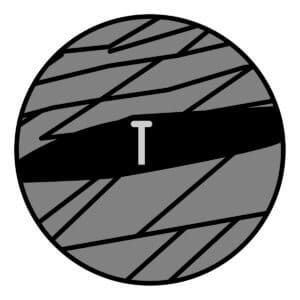A roof leak is never a fun experience. It can cost you your time, your money, and your energy all at once! Here, we have compiled a list of the most common causes of roof leaks to hopefully help you avoid them altogether.
Your home is a valuable investment and one you strive to take care of and improve. Home maintenance is essential to the upkeep of your home—that includes roof maintenance. When it comes to home maintenance projects, it’s critical that you think about how a project can help maintain your home’s value and livability. Read on to learn the common causes of roof leaks and how you can nip them in the bud before they become a bigger issue.
Broken Shingles

Broken shingles are one of the most common causes of a leaky roof and are often the issue many people think of first. Since they are immediately visible, shingles are more likely to be diagnosed by a layperson. It is especially important to analyze the integrity of your shingles periodically, especially after major storms with high winds.
Broken Flashing

Broken flashing can be less noticeable if you are not intimately familiar with your home. This is a good one to trust an expert with. Over time, the tarring used to secure your roof together underneath the shingles can wear off. When a leak occurs, you should check the flashing at the source of the leak and call a professional to help address the issue.
Ice Dam Build-Up

An ice dam [LINK to article] is a ridge of ice that forms at the edge of your roof and prevents water from draining off the top. The water that backs up behind the dam can leak into a home and cause damage to walls, ceilings, insulation, and other areas.
Moisture entering the home from ice dams can lead to the growth of mold and mildew. These can cause respiratory problems. If you notice ice dams, act quickly to prevent damage inside your home.
Improperly Installed Skylights

While skylights can add sparkle and brightness to a room, as well as improve ventilation (models that open and shut), there are some pitfalls you may want to consider.
Improperly installed units can leak, which will cause major problems. Since skylights will admit more light than windows, they can cause issues such as overheating, too much glare, and fading of furniture fabrics. These issues can be kept at bay with proper preventative measures.
Condensation can also cause trouble if you have a fixed skylight installed in one of your bathrooms, where moisture is prevalent. There are venting or ventilating skylights that help release steam and odors and promote air circulation, which may be worth looking into as an alternative. These units and skylight shades can help prevent issues in areas where heat build-up is a problem.
An Aged Roof

If you spot a leak on your roof, it means it has been compromised and may require major repair or replacement. A leak on a roof that’s under ten years of age is most likely the result of poor workmanship, but a leak on a roof that’s 15 years or older is a sign that you waited far too long to replace your roof. If the latter is the case, you won’t want to wait any longer because a leak might mean that more harm is on the horizon.
Waiting could significantly affect the cost of replacing your roof if water ruins your insulation, drywall, plywood, paint, electrical system, etc. So, don’t delay!
Clogged Gutters

Cleaning your gutters can feel like an almighty chore, but it has to be done. There are a lot of tools that you can use to make it easier. A hose can be great at washing leaves and other things out of the gutter, or if you find a lot of it is getting stuck, you can use a rod to get that stuff loose. Don’t forget to also clean out your downspout!
Cracked Chimney

Chimneys are an essential part of the home but can be compromised and cause leaks. If you have a chimney leak, you may notice water coming in through a wall or into your fireplace. You should not have water in either location. If not discovered and addressed quickly, a damaged chimney can require expensive repairs.
Low-Slope Roofs

Low-slope roofs work well on many commercial buildings. They’re relatively affordable to install and are easier and safer to clean than high-pitched roofs. They can also last decades.
Despite the list of benefits associated with low-slope roofs, this type of roofing system has its drawbacks. Low-slope roofs are susceptible to leaks as water tends to stagnate on the flatter surface of the roof. However, this situation is preventable and treatable with regular inspection and preventative maintenance.
Raised Roof Nails

Although all leaks are bad, nail hole leaks are the easiest and cheapest types of roof leaks to repair. The hardest part about them is finding them since they are so small. Once you train your eye, you can quickly repair them by covering them with some roof flashing.
To prevent roof leaks in the future, properly hammer in and remove nails on your roof so they are secure and do not let water leak past them.
General Negligence
While neglect can be one of the core reasons for the nine previously mentioned reasons, this refers more to what can lead to it. A single misstep and lack of preventative maintenance could cause costly damage to your home.
Conclusion
If you’re looking for a qualified roof inspector or leak repair, contact the experts at Legacy Restoration for a free quote today!

